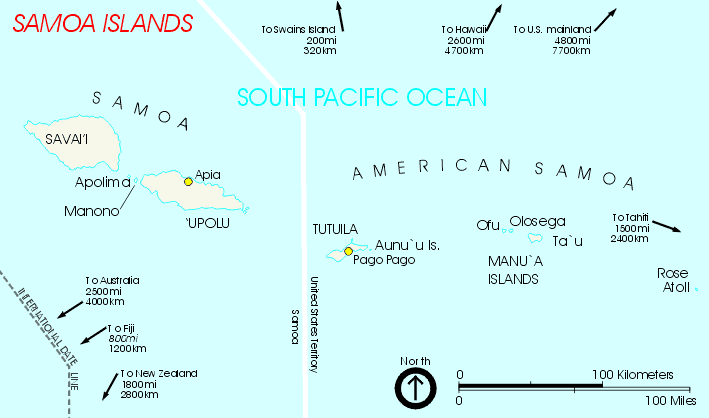This post was originally published on Full, Bright Reflections (https://fulbrightclinton2015.wordpress.com/),
a shared blog for the 2014-2015 Fulbright-Clinton Fellows.
As I finish off my third full week in Samoa, I wanted to focus this post on providing you with a few images of life in Apia – at least as I’ve experienced it thus far.
Let’s start with how people get around. The means of transport are essentially the same – cars, buses, taxis. The style, however, is a whole other matter. Here, people deck out their vehicles to an extent that would make “Pimp My Ride” look snooze worthy. Fuzzy animal print on the dashboard and the name of your car emblazoned in rainbow lettering across the windshield are both among the standard decorations for cars and buses in Samoa. If you want to increase the retail value of your car, all you need is extra swag. A couple of Australian volunteers attached a minimum of six Mustang horses to their dash, rear view mirrors, and car top, and they have now been repeatedly stopped by people who were hoping that their car was for sale.
 |
| A trip to the bus depot in downtown Apia is guaranteed to be full of bright colors and creative bus names (Source: http://www.alaimoana.ws/ - I keep forgetting to get a shot of my own!) |
In fifth grade, our bus driver had tricked out his school bus with speakers and would blast a variety of R&B and rap during his route. He would have fit in perfectly in Samoa. Every bus here has a sound system, and they without fail will blast their favorite tunes as they drive about the city. Yesterday, I cruised to work to a remix of Gagnam Style, and today’s ride was to a series of reggae-style remixes of Christmas hits. I have also heard that people will sit on strangers’ laps when there aren’t enough seats, but I haven’t been in a bus yet that was crowded enough for that to happen. While it was a bit daunting to catch a bus for the first time, I am so happy that I now get to regularly enjoy this very distinctly Samoan experience!
Day-to-day life in Apia is also marked by a very different soundtrack from what would mark my days in Nashville, Dayton, or Paris. The morning starts at 5 am with the gong of bells from the church next door. My first alarm at 7:30am is then usually accompanied by the cheeps of baby chicks who are wandering through our backyard. And less charmingly, a rooster will also chime in on some mornings. It seems rather ironic now that before coming to Samoa, I would use the rooster call sound on my phone when I needed a particularly loud and annoying wake up call.
Evening follows with its own unique set of sounds. To start, our landlady has a couple of dogs that stay on the property to guard it. Dogs here are very different from the yip-yaps that little biddies parade around the streets of Paris. They are often left to their own devices and serve more as guards than as companions. Our landlady’s dogs like us well enough, but they definitely have never been trained, so evenings are often punctuated by lots and lots…and lots of barking. And as I drift off to sleep at night, it is often to the strange, indescribable chirping of geckos.
To give you an idea of what this is like:
So all and all, it has been an exciting, full first three weeks with lots of new discoveries, and I’m looking forward to discovering more of day-to-day life in Samoa over the next ten months!
And to finish off, here is what will be your first Samoan word or phrase of the week:
Hello: talofa, or hi: malo
(This is all I really know for the moment, but I’ve just started Samoan lessons, so I’ll definitely have more to add in the coming months!)

